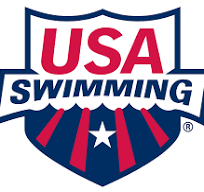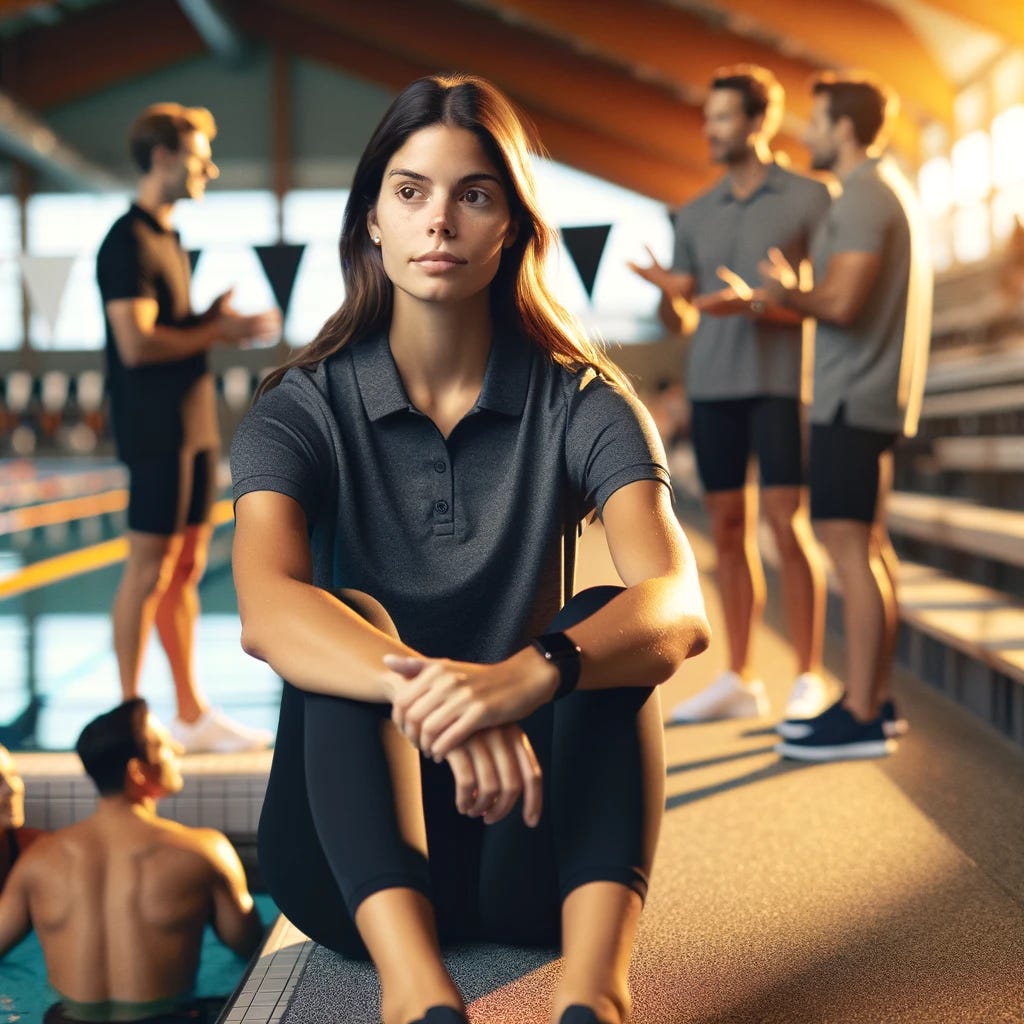The Silent Struggle of Swim Coaches: Why Connection is the Missing Piece
How building coaching mastermind groups can combat burnout, isolation, and elevate the sport
USA Swimming is at a crossroads. The sport is evolving around us, the world is changing, and we have a choice: Do we maintain the status quo, or do we dare to build something extraordinary?
I believe we can build something extraordinary and create a USA Swimming that connects, inspires, and empowers every swimmer, coach, volunteer, and parent. Over the next few weeks, I will be sharing my thoughts on the future of the sport, based on my experience as a coach, program owner, and volunteer over the last 25 years. My intention is to generate dialog. The future of the sport in the United States is filled with potential that will only be fulfilled if more people are willing (and permitted) to lend their voice and help plot the course.
Coaches: The Heart of the Sport
Meet Sarah…
Sarah is the head coach of a USA Swimming team in the Midwest. Her program has 150 swimmers and frequently finishes in the top ten at their LSC championship meets. Over the past few years, her program has developed a handful of Sectional and Futures qualifiers and their first ever Junior National qualifier. She wants to give her swimmers every opportunity to see success, so she conducts two morning practices per week, writes separate workouts for the distance, IM, and mid-distances groups at least four times a week, and oversees their dryland program. Thankfully, she no longer has to design that program as the team now contracts it out to a strength and conditioning coach. Sarah also assists with their developmental group three times a week.
Administratively, Sarah oversees a staff of eight part-time assistant coaches, attends monthly board meetings as the CEO, constructs and oversees the yearly budget, plans travel for away meets, stays in regular communication with the town that owns and runs their facility, and stays active in her LSC as a member of their Senior committee.
Sarah swam through high school and for two years in college. While she wasn’t a national-level swimmer, she loved her experience as an athlete and got into coaching largely so she could help the next generation of swimmers receive the same life-long benefits she did.
When she first took this position, Sarah was incredibly excited! She started as an assistant age group coach and worked her way up to become the Head Coach and CEO. For the first few years, she didn’t mind the fact that the hours made it almost impossible to go out and meet people away from the pool. She was so dedicated to the job, that was all that mattered. She loved being on deck, traveling regionally and nationally for meets, and especially watching her athletes improve and her team grow.
But slowly, the weight of the job started to take a toll:
· It was getting harder and harder to answer that 4:45 am alarm twice a week.
· Rather than relax or exercise, her downtime was spent writing workouts, doing administrative work, and answering emails. She began to feel like she was on call 24 hours a day, seven days a week.
· There was no off-season or time to recharge. When she did have off for a week or two, she was still working 40–50-hour weeks prepping for the next season.
Worst of all, she started to recognize how isolated she felt. She would hear from friends working in other industries about the support and camaraderie amongst their co-workers and feel immediate pangs of jealousy. She couldn’t share her struggles with her assistant coaches or fellow board members – they were looking to HER for answers.
Sure, she got to connect with other coaches at meets or during the coaches’ social at Senior Champs. But neither provided the opportunity to go deep in conversation and the coaches’ socials haven’t been held recently. Now, after a long day at a meet, Sarah just grabs a sandwich on her way home (or to her hotel) and scrolls through Instagram the rest of the evening.
Sarah’s physical and mental health started to deteriorate. She wasn’t eating healthy and exercise was becoming more and more infrequent. She started questioning everything about her chosen profession:
“Do I want to be doing this in five years?”
“My health is struggling, is this worth the constant stress and exhaustion?”
“I don’t want to leave the swimmers, but I feel like I have no life away from the pool.”
During a week off from training between short course and long course seasons, Sarah decided it was time to leave coaching. She will be heartbroken to walk away from the sport that she loves and the athletes she cares about, but the isolation alone has become unbearable.
(Sarah and her team are fictitious, but I could be describing thousands of coaches across the country.)
Swim coaches are the heart of the sport as the people in regular and direct contact with athletes, parents, officials, and facilities. Swimming is unique in the world of youth sports because of the fact that our teams are all led by professional, well-trained coaches, not volunteers. Swim coaches are some of the most giving people, frequently putting the needs and goals of the athletes and their team ahead of themselves.
Coaches give so much of themselves, and we are not doing nearly enough to support them.
Some of you have heard me talk about the need to update how swim coaches are educated in the United States. The biggest issue is that coach education is one-dimensional: a coach sits in a conference room or behind a computer, is given some information, and then the “education session” is over: “Now go put it into practice!”
At most conferences, you have to go into the hallway or bar afterward and try to find someone willing to discuss what you learned. When learning in an online environment you rarely even get this opportunity.
This is not how adults learn.
Clinics and online learning would become transformative in the coaching world if they were made to be experiential.
If you attended my talk at the ASCA World Clinic in 2022, you got a taste of this. Yes, I talked about community building to increase athlete retention. But at the end of my talk, I posed some questions to the audience, gave them time to think and journal on them, and then had them get into small groups to discuss their answers.
This allowed them to hear what I had to say, immediately plan how they could implement it in their clubs, get instant feedback from their peers on their ideas, and hear the viewpoints from three or four colleagues.
Revamping coach education is important, but creating more consistent ways for coaches to connect, learn from each other, and talk freely and candidly about things like challenges with athletes, mental health, and leadership would be a gamechanger for the profession.
This can be done well and effectively through the creation of coaching mastermind groups.
Take Sarah, for example:
· What possibilities would open up for her if she were able to regularly connect with her coaching peers, realize she wasn’t alone, and that the struggles she was experiencing were felt by many other coaches?
· What would it mean to Sarah if she had a group of her peers she could go to and receive support from when she felt like she was getting her butt kicked and provide support to others when she felt like she was kicking butt?
· How might Sarah’s outlook change if she were introduced to new and proven strategies for handling difficult parents, structuring her team culture, and balancing her workload, both through short educational offerings and hearing feedback from other coaches?
· How much would Sarah’s quality of life and coaching improve if she were able to gain knowledge on topics not usually talked about in education settings like time management, healthy meal prep, or effective employee delegation?
· Finally, what would be the ripple effect on her staff and team if Sarah were to rediscover her love for the profession? What would an energized Sarah bring to the pool every day and how would that impact the athletes?
If the USA Swimming community were to prioritize coaching connection, it would not just save individual careers (and possibly even lives), it would elevate the entire sport.
The good thing is that structured coaching mastermind groups can easily be developed, established on a very quick timeline, and made accessible to most USA swimming coach-members. If designed and facilitated properly, they will add tremendous value to the coaching community.
Imagine what would be possible if swim coaches like Sarah didn’t have to navigate challenges alone but instead had a trusted circle of peers, a place to share ideas, struggles, and solutions. What if, rather than feeling isolated, coaches could find strength in community—a space designed not just to teach, but to connect and support one another? That’s where the idea of coaching masterminds comes in.
Investments in coaches are investments in the individual, the swimmers, and the culture of the sport. “Take care of the heart, and it will take care of you.”
Next up in this series will be a post on communication.
Communication in USA Swimming is fragmented, inconsistent, and often fails to reach the people who need it most. This has resulted in teams across the country feeling disconnected from each other and certainly disconnected from Colorado Springs. In the next installment, we’ll dive into ways we can rebuild these connections, create a unified message, and make every member of the swimming community feel like they truly belong.







Get out and get a group together. Don’t wait. The group of coaches in my circle have been through hell together. We also make it through every time. Gotta drop the ego and just let em know when things aren’t going well. Someone in the group has been there to some degree and having this helps. We have also done incredible things and have had each other to both high five and bring us back to the ground.
Don’t wait. Start your circle.
“Coaches give so much of themselves, and we are not doing nearly enough to support them.” I completely agree with this sentiment and appreciate the points you’ve raised in your article. Given your experience as a program owner, I’m curious about the specific measures you implemented to support your coaching staff. For instance: You mention the importance of creating support groups for coaches. Did you establish such groups within your organization? If so, how were they structured, and what impact did they have on the coaching staff?Could you share how often you engaged in one-on-one or group discussions with your coaches to tackle these issues? How did you ensure that your coaching staff had access to the necessary tools, training, and support to excel in their roles?
Understanding how these strategies were implemented in your program would provide valuable insights into effective support systems for coaches. It’s easy to outline what should be done, but true insight comes from real-world experience. If these steps weren’t actively implemented, how can we trust that these solutions truly support coaches in the way they need?